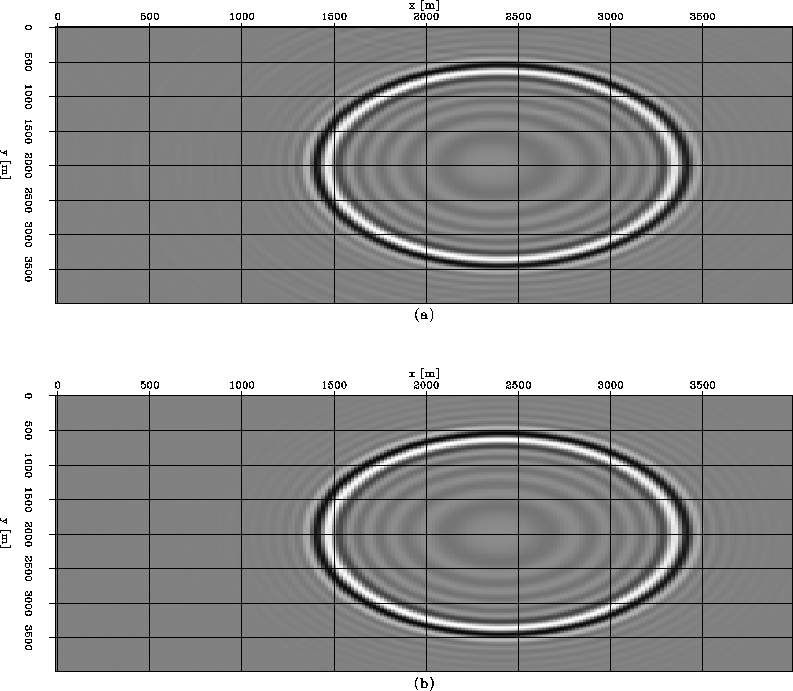




Next: Acknowledgments
Up: Shan and Biondi: 3D
Previous: 3D impulse response
We present a 3D wavefield-extrapolation algorithm for tilted TI media. The wavefield is extrapolated by an
implicit isotropic operator with an explicit anisotropic correction.
Tilted TI media are not circularly symmetric,
therefore the explicit anisotropic correction has to be a 2D convolution operator. It is designed by
a weighed least-square method. With proper weights, we can shorten the correction operator
and reduce the computation cost at the price of losing the accuracy of high-angle energy.
A 2D synthetic dataset example shows that we can still have good accuracy for high-angle energy by
decomposing the wavefields into plane waves and extrapolating them in tilted coordinates.
3D impulse responses show that our algorithm is accurate up to  with the short 2D filter.
depth
with the short 2D filter.
depth
Figure 7 A horizontal slice of the 3D impulse response in a tilted TI medium at a depth of z=1000 m: (a) Our algorithm. (b) The anisotropic phase-shift method.




 inline
inline
Figure 8 An inline slice of the 3D impulse response in a tilted TI medium at y=2000 m:
(a) Our algorithm. (b) The anisotropic phase-shift method.




 cross
cross
Figure 9 A cross-line slice of the 3D impulse response in a tilted TI medium at x=2000 m:
(a) Our algorithm. (b) The anisotropic phase-shift method.










Next: Acknowledgments
Up: Shan and Biondi: 3D
Previous: 3D impulse response
Stanford Exploration Project
5/3/2005



